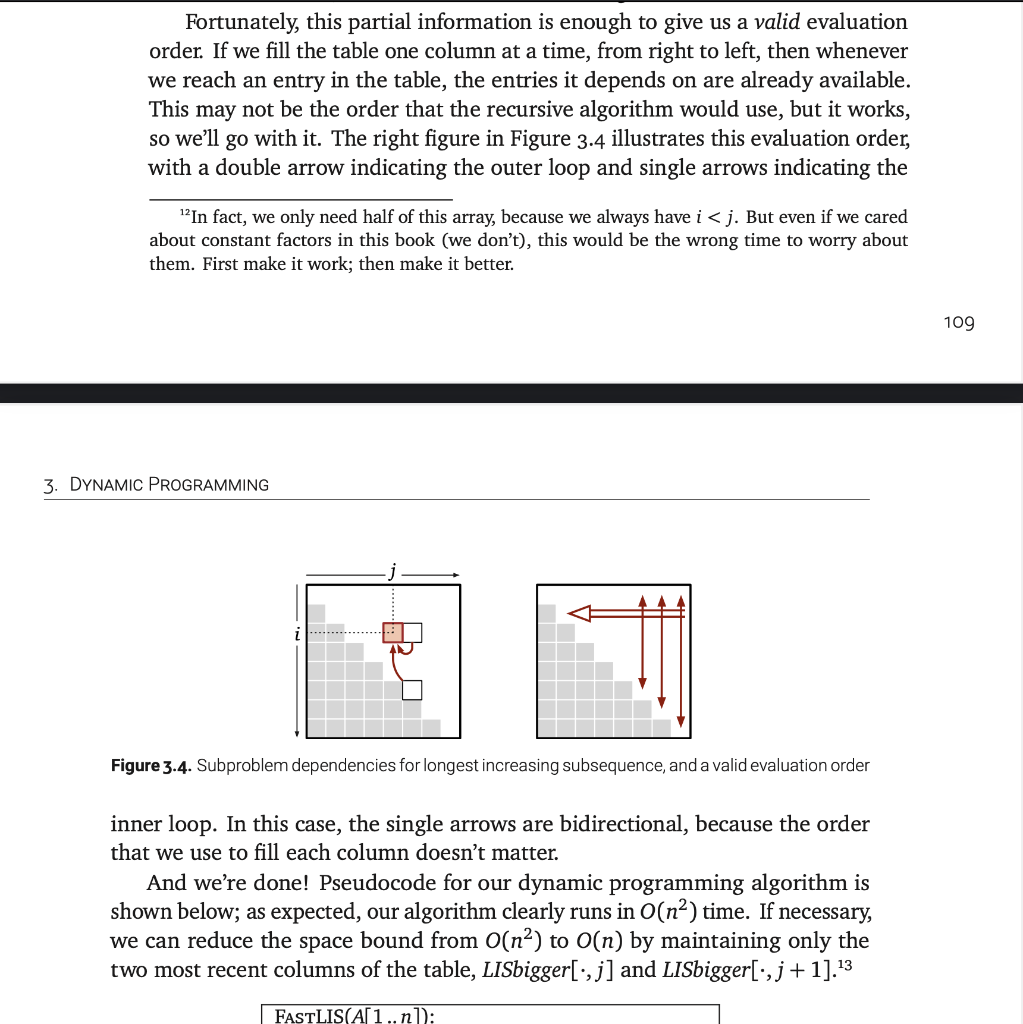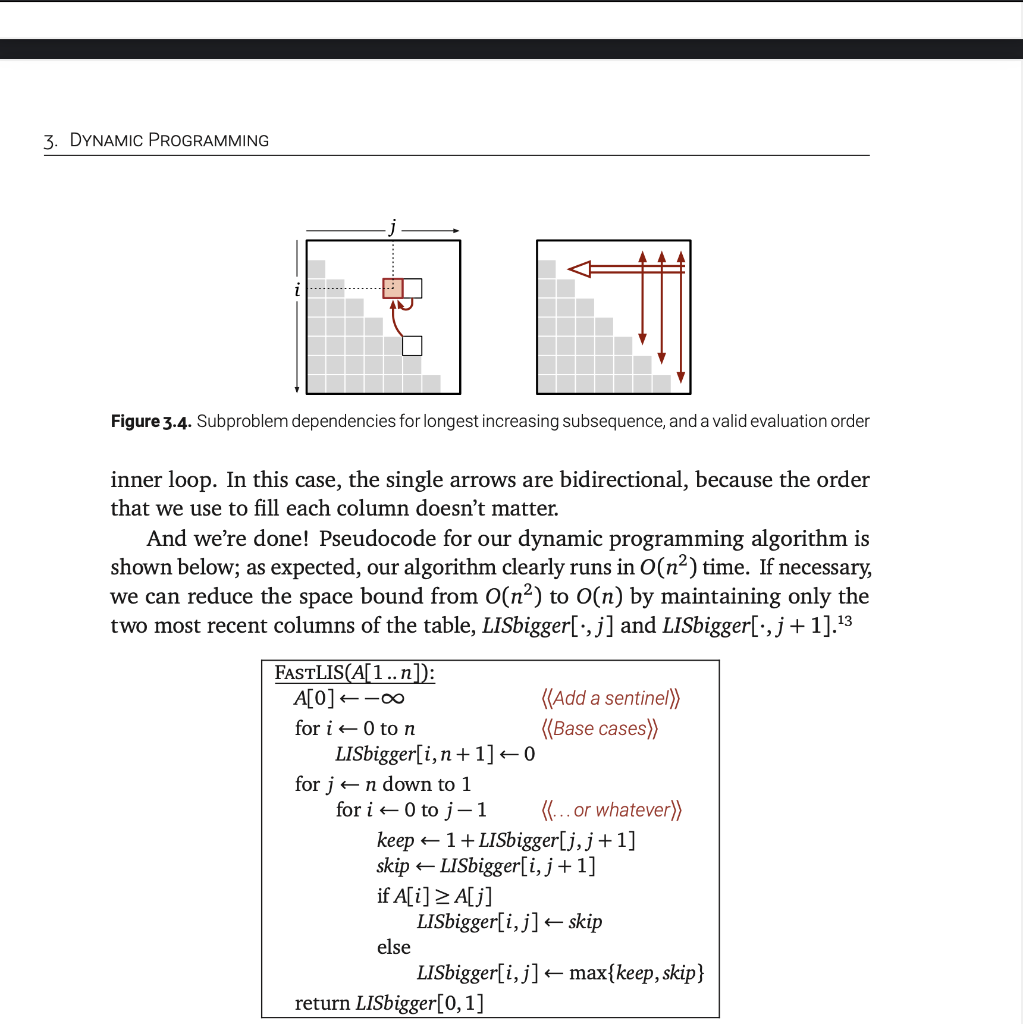Answered step by step
Verified Expert Solution
Question
1 Approved Answer
I will give thumbs up for the answer. I have provided all the documentation needed below. Please let me know if something isn't clear. Dynamic
I will give thumbs up for the answer. I have provided all the documentation needed below. Please let me know if something isn't clear.
Dynamic programming: LIS (10 points)
We looked at the Longest Increasing Subsequence (LIS) problem in the textbook (section 3.6). Using the pseudocode found on page 110, write a program called LIS.java or lis.py that implements the FastLIS method. As usual, also implement a main method or section that:
- Initializes an array A with the values 0, 60, 10, 70, 20, 80, 30, 90, 50, 100, 60, 110, 70, 120, 80, 90. The 0 at the beginning is not part of the sequence but is put there to get the method working.
- Calls the LIS method, which takes A as a parameter and returns the length of the longest increasing subsequence. In this case, the length is 8.
- Prints the length with a suitable message.
Longest Increasing Subsequence (LIS) problem in the textbook (section 3.6)



Step by Step Solution
There are 3 Steps involved in it
Step: 1

Get Instant Access to Expert-Tailored Solutions
See step-by-step solutions with expert insights and AI powered tools for academic success
Step: 2

Step: 3

Ace Your Homework with AI
Get the answers you need in no time with our AI-driven, step-by-step assistance
Get Started


